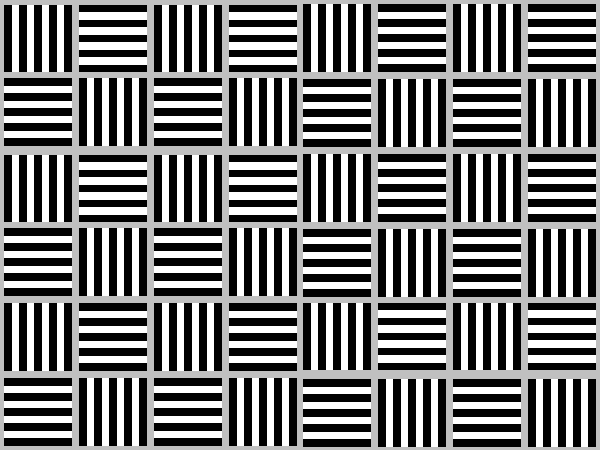
Illusions
Here I present two variations of my favourite perceptual illusion, the so-called McCollough Effect, named after its discoverer, Celeste McCollough. I am providing a modified version of it done with a hexagonal honeycomb matrix which provides the viewer with three induced colours as opposed to only two in the original version done with a square matrix. The original McCollough Effect is well documented on the web. Here are references to the original papers:
McCollough, C.Conditioning of color perception, American Journal of Psychology, 78, 362-378 (1965)
McCollough, C.Color adaptation
of edge-detectors in the human visual system. Science 149, 1115-1116 (1965)
The most striking aspect of this illusion is that the time period between the adaptation and the effect can be several hours or even days. The only drawback is that is does require an extensive adaptation period of several minutes.
Instructions:
1) Verify that the original black and white image has no colours.
2) When you put the mouse over the image, it will change to one composed of black and coloured lines. Do not fixate on any part of the image, simply keep your head level and move your eyes around over the entire area. You MUST do this for several minutes. A few seconds is NOT enough!
You may also click on the image. This will replace the subtractive primaries (Yellow, Cyan, Magenta) with the additive primaries (Red, Green, Blue). My personal experience is that the subtractive primaries produce a more pronounced effect. (Note that this is the 2nd variation of the illusion I allude to in the opening paragraph.)
3) Move the mouse away from the image. You should now notice that the white parts of the image have taken on the complementary colour of the corresponding colour in the coloured image.
4) Come back again a few days later. The white parts of the image still have a weak pastel colouring. Your brain has been permanently rewired!!

If you are interested, go to the
![]() programs page for the program that created the honeycombs. Here is the original rectangular version of the illusion:
programs page for the program that created the honeycombs. Here is the original rectangular version of the illusion:
